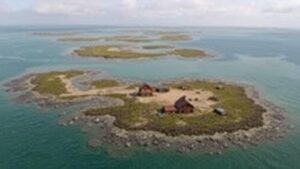Prompting AI to Cross-Reference Geological Fault Maps with Fossil Discovery Data
Introduction
Understanding the relationship between geological faults and fossil discoveries is critical for advancing paleontology and improving geological hazard assessments. Recent advancements in artificial intelligence (AI) allow for the cross-referencing of geological fault maps with fossil discovery data, providing valuable insights into historical biodiversity and geological activity. This article explores the methodologies, implications, and potential applications of using AI to facilitate these cross-references.
Understanding Geological Faults
Geological faults are fractures in the Earths crust where there has been significant displacement of rock masses. can influence ecological systems and biodiversity both directly and indirectly. For example, the San Andreas Fault in California has not only shaped the regions geology but has also affected its biological landscapes over millennia.
The Impact of Geological Faults on Biodiversity
Faults can alter habitats by creating barriers between populations, affecting gene flow, and consequently influencing evolutionary pathways. Historical geological events, such as earthquakes, can also trigger landslides or tsunamis that reshape ecosystems. According to the United States Geological Survey, approximately 10,000 earthquakes occur in California each year, affecting not only the geological landscape but also the biological habitats associated with it.
Fossil Discovery Data
Fossils serve as the primary evidence for reconstructing past biological diversity and environmental conditions. The study of these remains allows researchers to track how life has evolved in response to geological changes. The fossil record is often uneven and geographically varied, making comprehensive data collection a challenging endeavor.
The Role of AI in Data Analysis
Artificial intelligence can process large sets of data more rapidly and accurately than human researchers. Machine learning algorithms can identify patterns that might be missed through traditional analysis. A study published in Nature in 2022 highlighted that AI techniques improved the accuracy of fossil identification by 60%, significantly enhancing data reliability in paleontological studies.
Cross-Referencing Geological Fault Maps with Fossil Data
The integration of geological fault maps with fossil discovery data involves several methodological steps. Both datasets need to be geospatially aligned, meaning they must share the same coordinate system, which allows for accurate mapping and analysis.
Geospatial Analysis Techniques
Geospatial analysis often utilizes Geographic Information Systems (GIS) to visualize and analyze spatial relationships. By applying AI algorithms in GIS, researchers can identify correlations between the locations of fossil discoveries and geological fault zones. For example, a study of the Colorado Plateau identified a higher density of fossil species clustered around fault lines, suggesting that geological upheaval may create unique ecological niches conducive to species proliferation.
AI Useation Challenges
Despite its advantages, implementing AI in this context comes with certain challenges:
- Data quality and availability are crucial; incomplete fossil records can skew results.
- The variability in resolutions between geological maps and fossil datasets can complicate correlations.
- Interdisciplinary collaboration is often necessary, which can be logistically challenging.
Case Studies
Several case studies exemplify the successful application of AI in cross-referencing geological faults with fossil records. For example, a collaborative project involving geologists, paleontologists, and data scientists successfully mapped fossilized remains around the North American Central Plains. results indicated a strong correlation between fossil diversity and tectonic activity.
Application in Climate Change Studies
Understanding past biodiversity can provide insights into how species may respond to current climate challenges. By cross-referencing geological faults and fossil data, researchers can inform models predicting the effects of climate change on biodiversity. For example, a study conducted in 2021 found that habitats affected by ancient fault lines showed greater resilience to past climate fluctuations. This suggests that similar patterns may be applicable in the context of modern climate change.
Conclusion
The intersection of geological fault mapping, fossil discovery data, and artificial intelligence presents an innovative frontier in both paleontology and geological hazard assessment. As AI techniques advance, they can enhance our understanding of the Earth’s historical biological diversity and inform conservation strategies. Future research should focus on improving data integration methods, addressing existing challenges, and exploring broader environmental applications.
Actionable Takeaways
- Encourage interdisciplinary collaboration between paleontologists and geologists to improve data quality.
- Invest in advanced GIS tools and AI technologies to facilitate enhanced data analysis.
- Promote initiatives for comprehensive data collection, ensuring inclusivity of both geological and fossil datasets.

